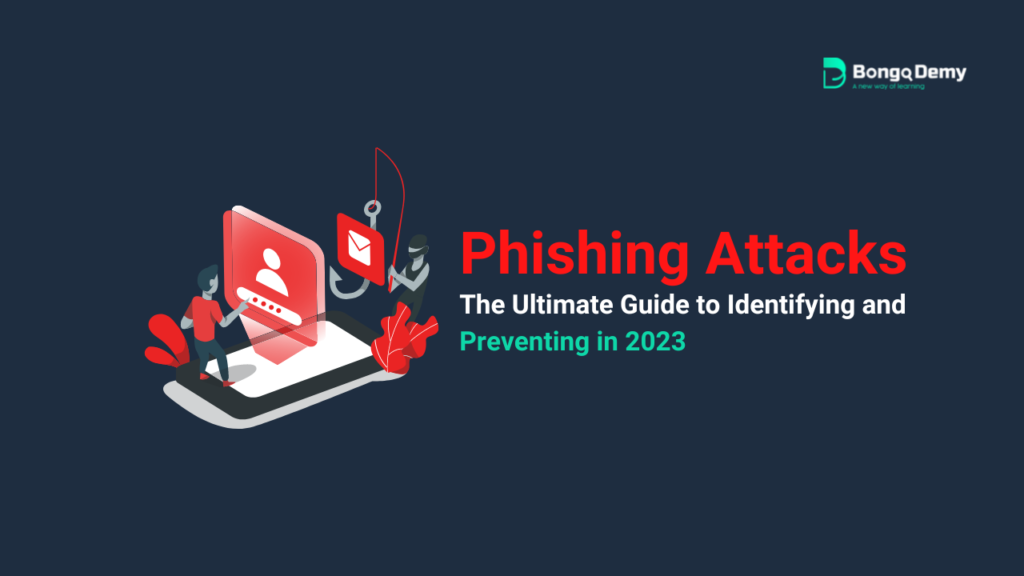Understanding Phishing Attacks

Phishing attacks are a prevalent form of cybercrime where attackers disguise themselves as trustworthy entities to deceive individuals into disclosing sensitive information, such as login credentials, financial details, or personal data. The term “phishing” was coined in the mid-1990s, reflecting the analogy of using bait to lure victims into divulging their information. Over the years, phishing attacks have evolved significantly, becoming more sophisticated and targeted.
There are several types of phishing attacks, each employing different techniques to exploit their victims. Email phishing is the most common form, where attackers send fraudulent emails that appear to come from reputable sources, urging recipients to click on malicious links or open infected attachments. Spear phishing is a more targeted variant, where attackers craft personalized messages aimed at a specific individual or organization, often using information gathered from social media or other sources to increase credibility.
Smishing and vishing are less common but equally dangerous forms of phishing. Smishing involves sending fraudulent text messages (SMS) to lure victims into clicking malicious links or providing personal information. Vishing, on the other hand, involves voice phishing, where attackers call victims, posing as legitimate entities such as banks or tech support, to extract sensitive information.
Phishing attacks typically work by creating a sense of urgency or fear, compelling victims to act quickly without thoroughly scrutinizing the request. Common tactics include fake security alerts, urgent account verification requests, or enticing offers that seem too good to be true. Attackers often replicate the branding and language of legitimate organizations to make their communications appear authentic.
The impact of phishing attacks can be devastating for both individuals and organizations. For individuals, falling victim to a phishing scam can result in financial loss, identity theft, and significant emotional distress. Organizations may face severe consequences, including data breaches, financial damage, reputational harm, and regulatory penalties.
Identifying Phishing Attempts
Phishing attempts are often characterized by several tell-tale signs that, if recognized, can prevent potential security breaches. One of the primary indicators of a phishing attempt is the presence of suspicious email addresses. Attackers often create email addresses that closely mimic legitimate ones but may contain subtle deviations, such as additional characters or misspellings. It is crucial to scrutinize the sender’s email address carefully before engaging with any unsolicited message.
Another common trait of phishing emails is the use of generic greetings. Unlike legitimate communications from businesses or institutions that often address recipients by name, phishing emails tend to use vague salutations like “Dear Customer” or “Dear User.” This lack of personalization should raise immediate red flags.
Phishing attempts frequently employ urgent or threatening language to create a sense of panic and prompt immediate action. Phrases like “Your account will be suspended” or “Immediate action required” are designed to bypass rational thinking and elicit a hurried response. Always approach such messages with skepticism and verify their legitimacy through official channels.
Unexpected attachments or links are also significant indicators of phishing. These attachments may contain malware, and links can redirect to malicious websites. It is essential to avoid clicking on any unexpected attachments or links without verifying their authenticity. Hovering over a link to preview its URL can often reveal discrepancies that signify a phishing attempt.
Spotting phishing websites requires a keen eye for detail. Ensuring that the website uses HTTPS is a primary step. However, even HTTPS sites can be compromised. Look for misspellings in URLs, as cybercriminals often create website addresses that closely resemble legitimate ones but with minor alterations. Additionally, scrutinize the website design; poorly designed sites with low-quality graphics or outdated layouts can be indicators of phishing.
Real-world examples further illustrate these points. Consider a phishing email mimicking a well-known bank, with an email address like support@bankofameric.com instead of support@bankofamerica.com. The email may use a generic greeting and urgent language, such as “Dear User, your account has been compromised. Click the link below to secure your account immediately.” The link might lead to a website with a URL like bankofameric.com/security, with slight misspellings and a design that looks almost, but not quite, right.
By recognizing these indicators, individuals and organizations can better safeguard themselves against phishing attacks, protecting sensitive information and maintaining cybersecurity.
Preventative Measures and Best Practices
Phishing attacks pose a significant threat to both individuals and organizations, making it crucial to adopt proactive measures to mitigate these risks. One effective strategy is the use of email filters. Configuring email filters to detect and quarantine suspicious emails can significantly reduce the likelihood of phishing emails reaching the inbox. These filters can identify common phishing patterns and flag them before they cause harm.
Implementing strong password policies is another critical step. Encouraging employees and users to create complex passwords and change them regularly can prevent unauthorized access. Strong password policies should include a combination of letters, numbers, and special characters, and discourage the reuse of passwords across different platforms.
Enabling multi-factor authentication (MFA) adds an extra layer of security. MFA requires users to provide two or more verification methods before gaining access to an account, making it harder for attackers to breach systems even if they acquire passwords. This could include a combination of something the user knows (password), something the user has (security token), and something the user is (fingerprint or facial recognition).
Keeping software up to date is essential in defending against phishing attacks. Software updates often include security patches that address vulnerabilities that could be exploited by attackers. Regularly updating operating systems, browsers, and applications ensures that the latest security measures are in place.
Employee training and awareness programs are vital components of a comprehensive phishing mitigation strategy. Educating employees about the signs of phishing attempts, such as suspicious links and requests for sensitive information, empowers them to recognize and report potential threats. Regular training sessions and simulated phishing exercises can reinforce these lessons and keep employees vigilant.
Lastly, adopting best practices for safe browsing and email usage can further reduce the risk of phishing attacks. Users should be advised to avoid clicking on unknown links, to verify the authenticity of email senders, and to never share sensitive information through email. Encouraging the use of secure, encrypted communication channels can also enhance overall security.
Responding to a Phishing Attack
Phishing attacks are a prevalent threat in today’s digital landscape, and knowing how to respond effectively can mitigate potential damage. Immediate action is crucial if you suspect or confirm a phishing attack. The first step is to disconnect from the internet to prevent further unauthorized access or data transmission. This action can halt the attacker’s ability to manipulate or exfiltrate sensitive information.
Next, report the incident to your IT department or relevant authorities. Prompt reporting allows for a swift response, potentially containing the attack and limiting its spread. The IT team can initiate an investigation to understand the scope and impact of the phishing attempt, ensuring that all necessary measures are taken to secure the network.
Changing passwords is another critical step. Update passwords for all affected accounts, prioritizing those with access to sensitive information. Utilize strong, unique passwords and consider implementing multi-factor authentication (MFA) for an added layer of security.
Long-term recovery strategies are equally important. Conduct a thorough system scan using reputable antivirus and anti-malware tools to detect and remove any malicious software that may have been installed during the attack. Regularly monitoring your accounts for unusual activity can help identify any unauthorized transactions or changes, allowing for immediate action if further suspicious behavior is detected.
Reviewing and updating security protocols is essential to prevent future incidents. This includes revising policies, enhancing employee training programs on phishing awareness, and implementing more robust security measures. Regular security audits can identify vulnerabilities and ensure that all systems are up to date with the latest security patches.
Below is a checklist to guide your incident response:
- Disconnect from the internet immediately.
- Report the incident to IT or relevant authorities.
- Change passwords for all affected accounts.
- Conduct a comprehensive system scan.
- Monitor accounts for unusual activity.
- Review and update security protocols.
- Enhance employee training on phishing awareness.
- Perform regular security audits.
By following these steps, you can effectively respond to a phishing attack and strengthen your defenses against future threats.

